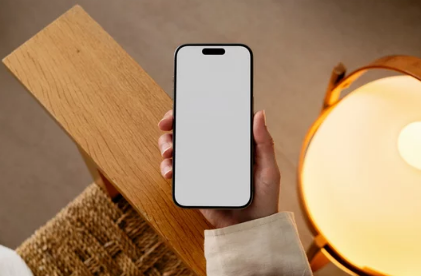Switching between iPhone and Samsung devices—or simply trying to exchange files—can feel overwhelming. These two smartphones dominate the mobile market, but because they operate on different ecosystems (iOS for iPhone and Android for Samsung), sharing data isn’t always straightforward. Many users struggle with transferring contacts, photos, videos, music, or app data.
This guide is designed to simplify the process. Whether you’re moving from iPhone to Samsung, Samsung to iPhone, or just sharing files with friends, you’ll find every reliable method explained here. By the end, you’ll know exactly how to share data smoothly, quickly, and without losing quality.
Why Data Sharing Between iPhone and Samsung Is Complicated
Before diving into the solutions, it helps to understand why sharing data between these two platforms can be tricky.
- Different ecosystems: Apple relies on iCloud and AirDrop, while Samsung uses Google Drive, Smart Switch, and other Android-friendly tools.
- Incompatible features: AirDrop only works between Apple devices, while some Samsung sharing tools don’t work on iOS.
- File format differences: iPhones save photos in HEIC format and videos in MOV, which may not open easily on Android without conversion.
- App restrictions: Certain apps are only available on one platform, making direct transfer impossible.
Despite these challenges, there are plenty of ways to bridge the gap.
Top Methods to Share Data Between iPhone and Samsung
1. Samsung Smart Switch (Best for Full Transfers)
If you’re switching phones entirely, Samsung Smart Switch is your best friend.
Steps to use Smart Switch:
- Download the Smart Switch app on your Samsung device.
- Connect your iPhone via cable (Lightning to USB-C) or use your iCloud backup.
- Choose the data you want to move: contacts, photos, messages, apps, and more.
- Let Smart Switch transfer everything for you.
Pros:
- Designed for new device setup.
- Works with iCloud or direct cable connection.
- Fast and efficient.
Cons:
- Only available for moving data to Samsung devices.
- Not ideal for small, one-time transfers.
2. Google Drive and iCloud (Cloud Storage Solutions)
Cloud services make sharing across platforms much easier.
Option 1: Google Drive
- Install Google Drive on your iPhone.
- Upload files like photos, videos, and documents.
- Open Google Drive on your Samsung phone and download them.
Option 2: iCloud
- Back up your iPhone data to iCloud.
- On your Samsung device, open a browser and go to iCloud.com.
- Sign in and access your files.
Pros:
- Accessible anywhere with internet.
- Good for ongoing file access.
Cons:
- Requires Wi-Fi or mobile data.
- Limited free storage (Google: 15GB, iCloud: 5GB).
3. File-Sharing Apps (Cross-Platform)
Several apps are designed to connect iPhone and Samsung directly. Some of the most popular include:
- Send Anywhere
- SHAREit
- Xender
- Zapya
How it works (example with Send Anywhere):
- Install the app on both devices.
- Select files on your iPhone.
- A unique key or QR code is generated.
- Enter the code on your Samsung device to receive files instantly.
Pros:
- Works wirelessly, no cables needed.
- High transfer speeds.
- No file size limitations compared to email.
Cons:
- Requires installation on both phones.
- Free versions may include ads.
4. Email and Messaging Apps (Simple but Limited)
For smaller files like documents or pictures, email and messaging apps such as WhatsApp, Telegram, or Messenger are quick options.
Steps:
- Attach the file to an email or send it through a chat.
- Open it on the other device and download.
Pros:
- Simple and widely available.
- No special tools needed.
Cons:
- File size restrictions (email usually 25MB).
- Some apps compress files, lowering quality.
5. Computer as a Middleman (Reliable for Bulk Transfers)
A computer can act as a bridge for sharing data.
Steps:
- Connect iPhone to your computer and copy files using iTunes or Finder (on Mac).
- Disconnect and connect your Samsung device.
- Move the files from your computer to the Samsung phone.
Pros:
- Works offline.
- Reliable for large data transfers.
Cons:
- Takes longer than wireless methods.
- Requires a computer and cables.
6. Bluetooth and Wi-Fi Direct (With Restrictions)
Apple doesn’t allow traditional Bluetooth file sharing with non-Apple devices, so you’ll need apps that use Wi-Fi Direct instead. Apps like SHAREit or Xender create a private hotspot to transfer files directly without using mobile data.
Pros:
- Very fast.
- Doesn’t need internet.
Cons:
- Not supported natively by iPhone.
- Requires third-party apps.
Best Practices for Smooth Transfers
- Check file formats – Convert HEIC to JPEG or MOV to MP4 for compatibility.
- Back up your data – Always create a backup before transferring.
- Use Wi-Fi instead of mobile data – Faster and cheaper for large files.
- Update both devices – The latest software ensures smoother transfers.
- Free up storage – Make sure the target device has enough space.
Which Method Is Right for You?
- Switching to a new Samsung phone? → Use Samsung Smart Switch.
- Need quick file access anywhere? → Go for Google Drive or iCloud.
- Want fast wireless sharing? → Try Send Anywhere, SHAREit, or Xender.
- Sharing a small file? → Email or WhatsApp is enough.
- Offline and bulk transfer? → Use a computer as a bridge.
Conclusion
Sharing data between iPhone and Samsung phones doesn’t have to be frustrating. With the right tools, you can transfer contacts, photos, videos, music, and more in just minutes. Whether you’re making a permanent switch or just exchanging files with friends, there’s a method that fits your needs.
From Smart Switch for full device migration to apps like Send Anywhere for quick transfers, the solutions are endless. The key is choosing the right approach based on the type and size of data you’re sharing. Once you do, data sharing between iPhone and Samsung becomes simple, seamless, and stress-free.
Also Read :
